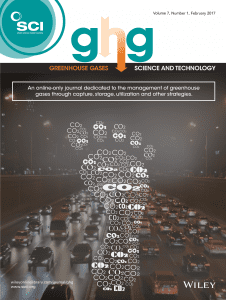
Global demand for transportation appears unlikely to decrease in the foreseeable future. China alone accounts for more than one-third of global demand in the transportation sector. Transportation demand in China has increased continuously with emissions reaching a total of 2.7 billion tCO2 between 2006 and 2010, and an average annual growth rate of 7%, which exceeded the growth rate of total emissions from the whole society, making transportation the third-largest CO2 emissions sector after the industrial and household consumption sectors. Therefore, China’s transportation sector would require significant efforts to be realized in reducing CO2 emissions.
Zongguo Wen, and colleagues, Tsinghua University, China published a new study in Greenhouse Gases: Science & Technology which intends to project CO2 emissions in China’s transportation sector from 2010 to 2020 and to assess the effectiveness of possible reduction measures. The results indicate that emissions would increase by 58%, reaching 1.30 billion tCO2 by 2020. They also conduct a scenarios analysis on CO2 mitigation potential in China’s transportation sector on the basis of key drivers and assess the effectiveness of different low-carbon strategies in China’s transportation. According to their findings, application of conventional transportation technology, together with accelerating the development of new-energy technologies, was the most effective and contributed to more than 70% of reductions.
On the other hand, policymakers are not convinced that the potential impacts of various measures have been quantified properly but the government should apply policies to improve the public transportation environment, charge tax on cars or fuel, and encourage bicycles, walking and share rides. The government should develop encouraging policies and guarantee mechanisms to stimulate key technology research, infrastructure construction, and market introduction of new technologies and products which will further promote emission reductions in China’s transportation sector. All these measures combined with traffic mode shifts in consumption patterns will lead to the sustainable and effective development of China’s transportation sector.
Read the full article in Greenhouse Gases: Science and Technology

















